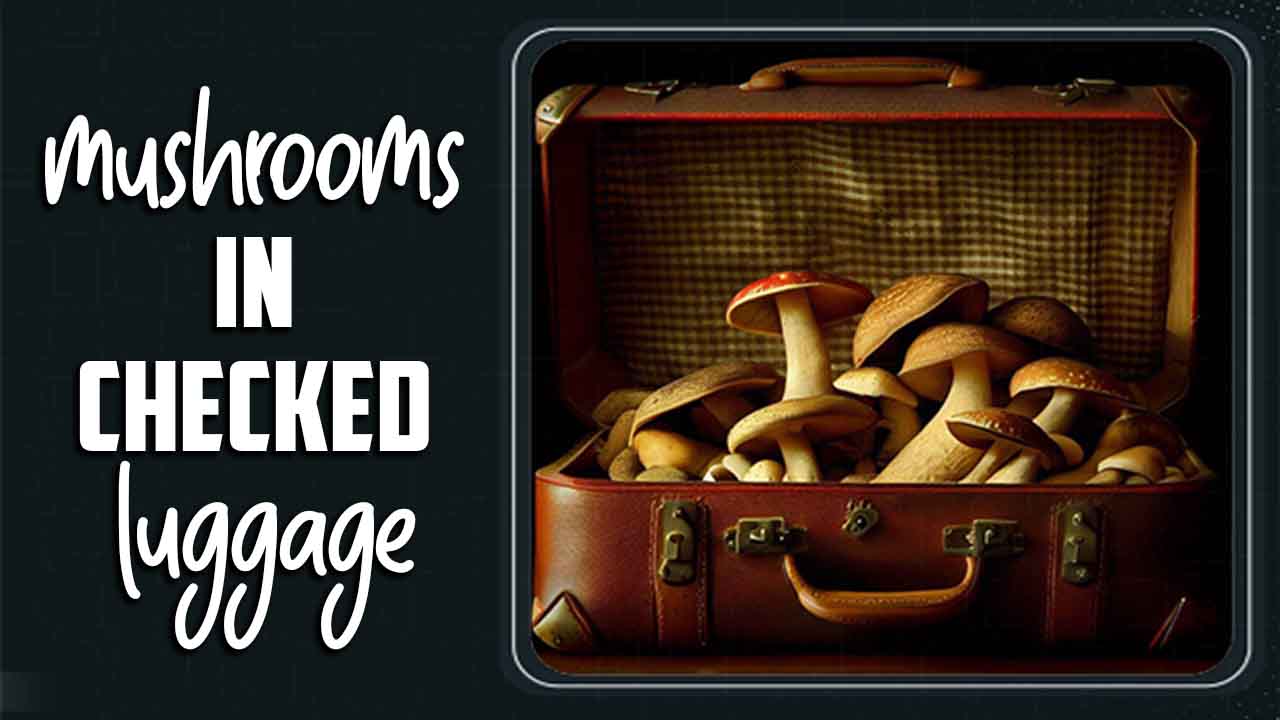Navigating Bogotá’s public transport can seem daunting, but with this cheat sheet, you’ll be zipping around the city like a local in no time! This guide simplifies everything, from understanding the TransMilenio system to using the SITP buses, ensuring your travels are smooth, affordable, and stress-free. Get ready to explore Bogotá with confidence.
Welcome, fellow travelers! Bogotá is a vibrant city, buzzing with culture and life. But getting around can sometimes feel like a puzzle, especially if you’re new to its extensive public transport network. You might be wondering about the best way to travel, how to pay, or even just how to get from point A to point B without getting lost. Don’t worry!
I’ve put together this essential guide to make Bogotá’s public transport accessible and easy for everyone, whether you’re a solo explorer, a family on an adventure, or someone who needs comfortable and reliable travel options. We’ll break down the systems, offer clear tips, and ensure your journeys are as enjoyable as your destinations. Let’s dive in and make navigating Bogotá a breeze!
Understanding Bogotá’s Public Transport Landscape
Bogotá’s public transportation system is primarily composed of two main components: the TransMilenio Bus Rapid Transit (BRT) system and the broader urban bus network, collectively known as the Sistema Integrado de Transporte Público (SITP). These systems work together to cover most of the sprawling capital, offering an affordable way to traverse the city. For travelers, understanding how these two intertwine is key to efficient movement.
The TransMilenio: The Backbone of Bogotá’s Commute
The TransMilenio is Bogotá’s pride and joy when it comes to public transit. It’s a Bus Rapid Transit (BRT) system, meaning buses run on dedicated lanes, much like a metro but with buses. It’s faster than regular buses because it bypasses typical city traffic. The system is designed with over 130 kilometers of dedicated corridors and 12 main lines that connect to major avenues across the city. Stations are elevated or at ground level and operate with a specific ticketing system.
Key features of the TransMilenio:
Dedicated Lanes: Significantly reduces travel time by avoiding general traffic congestion.
High Frequency: Buses run very often, especially during peak hours, minimizing wait times.
Extensive Network: Reaches most key areas of the city.
Modern Stations: Designed for accessibility and efficient passenger flow.
For travelers, especially those who might need extra comfort or convenience during longer journeys, understanding TransMilenio’s routes and how they integrate with other transport modes is crucial. It’s often the fastest way to cover long distances within the city.
The SITP: The Integrated Urban Bus Network
The SITP (Sistema Integrado de Transporte Público) is the comprehensive urban bus system that complements the TransMilenio. It includes a wide array of buses – from smaller feeder buses to larger ones – that connect neighborhoods to TransMilenio stations and reach areas not directly served by the BRT. The SITP is also crucial for shorter trips within neighborhoods or to destinations not on a main TransMilenio line.
The SITP is divided into several types of routes:
Rutas Zonales (Z-Routes): Identified by a “Z” followed by a number. These buses cover specific zones within the city and are your go-to for many daily commutes. They typically have a green color scheme.
Rutas Alimentadoras (Feeders): Marked with an “A” followed by a number. These buses connect neighborhoods to larger TransMilenio stations, acting as vital links. They often have a blue color scheme.
Rutas Especiales (Special Routes): Marked with an “E” followed by a number. These are designed for specific needs, like connecting certain areas or operating during particular hours.
Rutas Corredoras (Corridor Routes): Marked with a “C” followed by a number. These operate along major avenues, often synchronized with TransMilenio hubs.
The SITP is instrumental for reaching those “last mile” destinations and for travelers who prefer a more direct route within a specific neighborhood.
Getting Your Travel Card: The TuLlave Card
The TuLlave card is your key to unlocking Bogotá’s public transport. Without it, you won’t be able to ride the TransMilenio or most SITP buses. It’s a rechargeable smart card that simplifies fares and reduces the need for cash.
What is the TuLlave Card?
The TuLlave card is a personal or anonymous card that stores your travel credit. You can purchase it at designated points and keep it for as long as you need. It significantly speeds up boarding and ensures you have the correct fare ready. It’s designed to be user-friendly for everyone, including those who may need to manage their travel with care, like individuals using adult diapers for extended trips, ensuring a smooth transition between different modes of transport.
Where to Buy and Recharge Your TuLlave Card
You can purchase and recharge your TuLlave card at several locations:
TransMilenio Stations: All major TransMilenio stations have ticket windows or automatic machines.
SITP Ticket Offices: Located in strategic points around the city.
Authorized Points of Sale: Many convenience stores, pharmacies, and smaller shops are authorized to sell and recharge cards. Look for the “TuLlave” logo.
Online: Recharge options are available through the official TuLlave website and associated apps.
Tip: When purchasing, you might be offered a personal or anonymous card. For most tourists, an anonymous card is sufficient. If you plan to stay longer and want to benefit from potential discounts or features, consider a personal card.
Types of TuLlave Cards
There are a few variations of the TuLlave card to suit different needs:
Anonymous Card: The most common and easiest to obtain. You can buy it, load it, and use it immediately. It’s great for visitors.
Personalized Card: Requires registration and offers benefits like transferring credit if the card is lost or stolen, and sometimes access to special fare options.
Senior Card: For individuals over 62 years old, offering discounted fares. Requires age verification.
Student Card: For registered students, offering a subsidized fare. Requires proof of enrollment.
For beginner travelers, the anonymous card is the most straightforward option.
Navigating the TransMilenio System
The TransMilenio system can be a bit confusing at first due to its unique station layout and express/local routes. But once you get the hang of it, it’s incredibly efficient.
Understanding Station Layouts
TransMilenio stations are typically elevated platforms with access gates and platforms for the buses. The key is to find the correct platform for your direction of travel and your specific route number.
Direction: Stations are often named by the major avenue they are on and the general direction (e.g., “Estación Museo Nacional – Cra 7”). Pay attention to whether you need to go North (Norte) or South (Sur), or East (Oriente) or West (Occidente).
Line Types: The TransMilenio has two main types of services:
Express (Expreso): These buses stop only at selected major stations, making them faster for long-distance travel. They are usually marked with an “E” at the beginning of their route number (e.g., E26).
Local (Local): These buses stop at every station along their route. They are marked with an “L” at the beginning of their route number (e.g., L10).
K, D, J, H, M, B, G, P, C Lines: These are the main trunk lines that run along the major corridors.
Pro-Tip: Before you head to a station, use a transit app like Google Maps, Citymapper, or the official TransMilenio app to determine your route and the best stations to board and alight.
How to Board a TransMilenio Bus
1. Enter the Station: Swipe your TuLlave card at the turnstiles to enter the station. The fare is deducted automatically.
2. Find Your Platform: Look for signs indicating directions and route numbers. Platforms are usually clearly marked.
3. Wait for Your Bus: Buses have route numbers displayed on the front and side. Ensure it matches your intended destination and the line type (Express or Local).
4. Board Safely: Wait for passengers to disembark before boarding. The doors open automatically.
5. Sit or Stand Appropriately: Use available seats, or stand in designated areas. Hold on to handrails as the bus can accelerate and brake quickly.
Transferring Between Lines
The TransMilenio system is designed for seamless transfers, often within the same station complex.
Within the Same Station: Many large stations are interconnected buildings. You can usually walk between different platforms or levels to catch another line without paying an additional fare, as long as you make the transfer within a certain time window (usually about 30-45 minutes, check official guidelines).
Between TransMilenio and SITP: Transfers between TransMilenio and SITP buses are possible and often cost-effective using your TuLlave card. You can transfer from a TransMilenio bus to an SITP feeder bus or vice-versa.
External Resource: For detailed route maps and real-time information, the official TransMilenio website is a valuable resource. You can find it by searching for “TransMilenio Bogotá official.”
Using the SITP Buses
The SITP buses are essential for filling the gaps in the TransMilenio network and for navigating specific neighborhoods. They offer a more traditional bus experience.
Identifying SITP Routes
As mentioned earlier, SITP buses are color-coded and marked with route prefixes:
Green (Zonal): For within-zone travel.
Blue (Feeder): To connect to TransMilenio hubs.
Red (Special/Corridor): For specific routes or along major avenues.
The route number and destination are always displayed prominently on the bus.
Boarding and Paying with SITP Buses
Boarding SITP buses is straightforward:
1. Wait at a Designated Stop: Find official bus stops (look for signs with bus icons).
2. Hail the Bus: Signal the driver when you see your bus approaching.
3. Board and Pay:
With TuLlave Card: Swipe your card on the reader near the driver or the entrance. The fare is deducted.
With Cash (Less Common): Some SITP buses (especially older zonal routes) might still accept cash, but the TuLlave card is highly recommended for reliability and convenience. If paying with cash, have the exact fare ready, as drivers often don’t carry change.
4. Find a Seat: Sit down if a seat is available, or stand holding onto a handrail.
Important Note: The SITP system is constantly being integrated and updated. To get the most accurate information on routes and services, it’s best to use real-time mapping apps.
Transfers and Fare Information
Understanding fares and how to transfer efficiently can save you money and time when using Bogotá’s public transport.
Fare Structure
The fare system in Bogotá is designed to be affordable. The cost varies slightly depending on the type of service and time of day.
TransMilenio: A single ride on the TransMilenio generally costs around COP $2,600 – $2,950 Colombian Pesos, depending on the time of day.
SITP: SITP zonal and feeder routes also have similar fare structures, typically between COP $2,100 – $2,600.
Transfers: Transfers between TransMilenio and SITP buses, or between different SITP routes, are typically free or heavily discounted if made within a specific time window (usually 30-45 minutes) using the same TuLlave card.
Example Fare Scenario:
Let’s say you take a TransMilenio bus (COP $2,950) and then transfer to a feeder bus within 30 minutes. The feeder bus ride might be free, or cost a significantly reduced amount, effectively consolidating your journey’s cost.
Cost Savings with TuLlave Card
Using the TuLlave card is not just for convenience; it also offers the best fares and allows for free or discounted transfers. If you were to pay with cash for multiple rides, the cost would be substantially higher.
Understanding the “Pico y Placa” for Taxis (for context)
While not public transport, it’s worth noting Bogotá’s “Pico y placa” rule, a traffic restriction based on license plate numbers to reduce congestion. It affects private vehicle usage during peak hours on certain days. Taxis are generally exempt, making them a viable alternative for direct door-to-door service, but public transport remains the most economical choice.
Tips for a Comfortable and Safe Journey
Traveling in a new city can bring its own set of challenges. Here are some tips to ensure your journeys on Bogotá’s public transport are comfortable and secure.
Comfort Tips
Stay Hydrated and Energized: Especially for longer trips or if you need to manage specific personal needs, carrying a water bottle and a small snack can be very helpful. For parents traveling with children, this is essential. Similarly, individuals using adult diapers for extended travel can ensure their comfort by carrying a small discreet bag with essentials for a change if needed.
Wear Comfortable Shoes: You might do a lot of walking to and from stations.
Pack Light: Avoid carrying excessively large luggage. If you need to manage travel with extra supplies, consider a compact, easy-to-carry bag that fits under your seat or in an overhead compartment.
Know Your Route: Use mapping apps before you leave to avoid confusion.
Be Aware of Peak Hours: TransMilenio and SITP can get very crowded during rush hours (roughly 6-9 AM and 4-7 PM). If possible, try to travel outside these times. If you must travel during peak hours, be prepared for close quarters.
Safety Tips
Stay Alert: Be aware of your surroundings, especially in crowded stations and buses.
Keep Valuables Secure: Your wallet, phone, and passport should be kept in your front pockets or a secure, cross-body bag. Avoid displaying expensive items.
Trust Your Instincts: If a situation feels uncomfortable or unsafe, move to a more public area or exit the bus/station.
Use Official Apps and Information: Stick to official TransMilenio and SITP information or reputable mapping services for route planning.
* If You Need Assistance: TransMilenio and SITP have staff in stations and on some buses. Report any issues or ask for help if needed. For specific accessibility needs, familiarize yourself with stations equipped for easier boarding.
For those using adult or child diapers for travel: Ensure you have discrete and easily accessible personal items for comfort and hygiene. Many travelers find a small, dedicated pouch within their main bag or a stylish fanny pack to be extremely useful for quick changes or sanitary needs during transit. This ensures you can focus on enjoying your trip without unnecessary worry.
Alternative Transport Options
While public transport is king for affordability, Bogotá also offers other options for those seeking convenience or different travel experiences.
Taxis
Official yellow taxis are widely available. You can hail them from the street, find them at taxi stands, or book through ride-hailing apps. Always ensure the meter is used for fare calculation unless traveling a very short distance where a fixed price might be agreed upon beforehand.
Ride-Hailing Apps
Apps like Uber, Didi, and Cabify are very popular in Bogotá. They offer fixed pricing, often competitive with taxis, and the convenience of booking and payment directly through your smartphone. This can be a great option for families, late-night travel, or when you have a lot of luggage.
Biking in Bogotá
Bogotá has an extensive network of bike lanes, particularly popular on Sundays when many major avenues are closed to traffic for “Ciclovía.” Several companies offer bike rentals and organized bike tours. If you’re an experienced cyclist and looking for an active way to explore, this can be a fantastic option.
| Transport Option | Pros | Cons | Best For |
|---|---|---|---|
| TransMilenio | Fastest for long distances, affordable, extensive network | Can be crowded during peak hours, requires careful navigation of lines | Commuting across the city, reaching major districts |
| SITP Buses | Reaches more neighborhoods, affordable, integrated with TransMilenio | Can be slower due to traffic, routes can be complex to memorize | Local travel, reaching areas not served by TransMilenio |
| Taxis | Door-to-door convenience, readily available, safe when official | More expensive than public transport, traffic congestion can increase fare | Late-night travel, group travel, when carrying luggage |
| Ride-Hailing Apps (Uber, Didi) | Convenient booking and payment, often competitive pricing, transparent fares | Requires smartphone and data, can be affected by traffic | Travelers seeking predictable pricing and ease of use |
| Bicycles | Healthy, |







